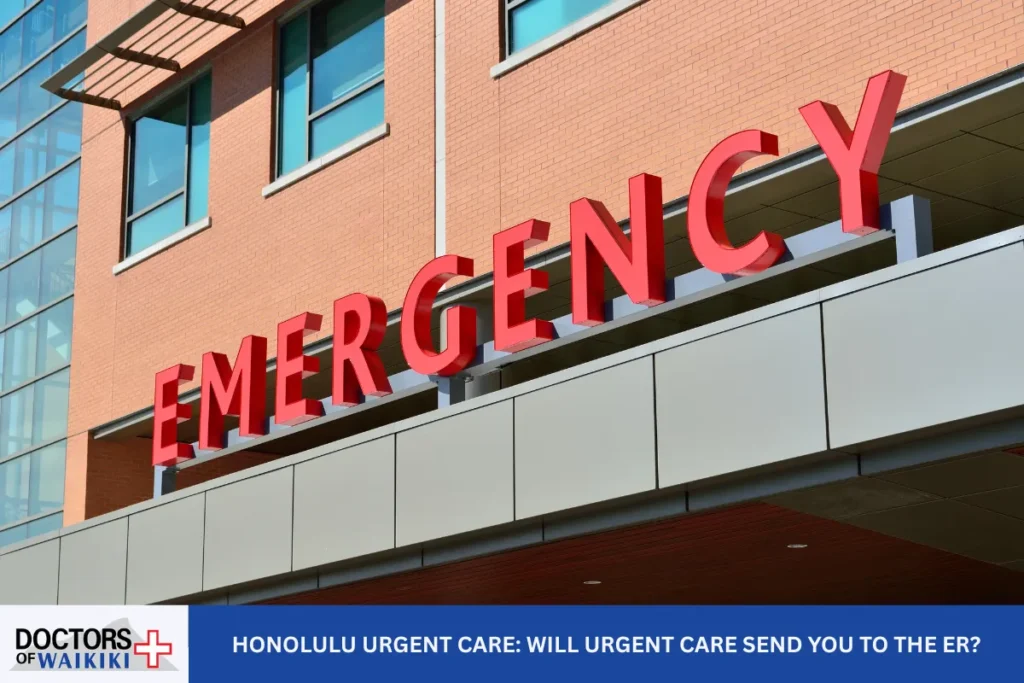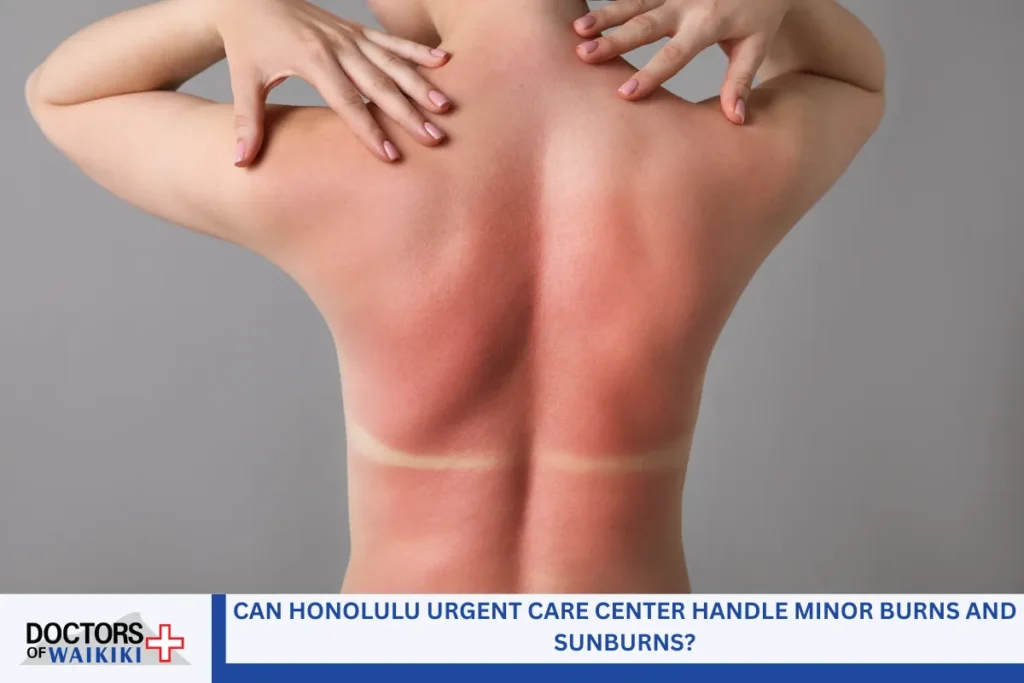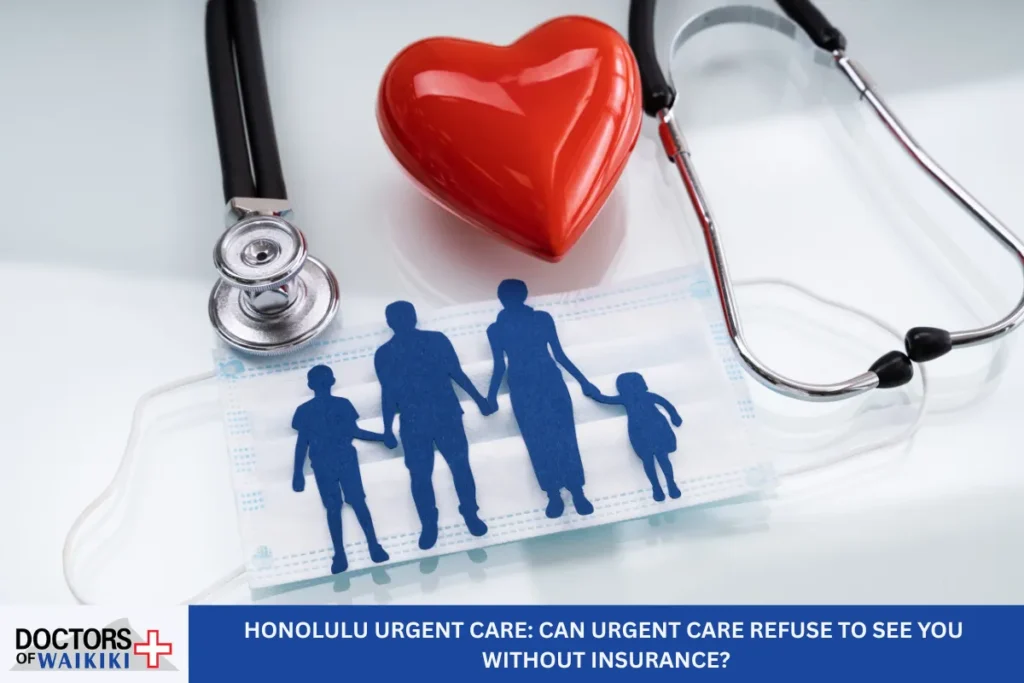If you’re looking for Honolulu urgent care, you may wonder, “Will urgent care send you to the ER?” Many people are unsure whether to choose a walk-in clinic or the emergency room when a medical issue arises, especially in places like Waikiki or Oahu. Choosing the right medical care quickly matters, but confusing choices can delay the help you need. This hesitation can waste precious time, lead to higher costs, and even put your health at risk if your problem is serious enough. Understanding the differences between urgent care centers and the emergency department can help you make smart choices—for yourself or a loved one. In this article, you’ll learn exactly when to visit urgent care vs. the ER, what services urgent care clinics offer, what happens if urgent care decides you need the ER instead, and what to expect if you’re sent to a hospital for higher-level care.
Urgent Care vs. Emergency Room: What’s the Difference?
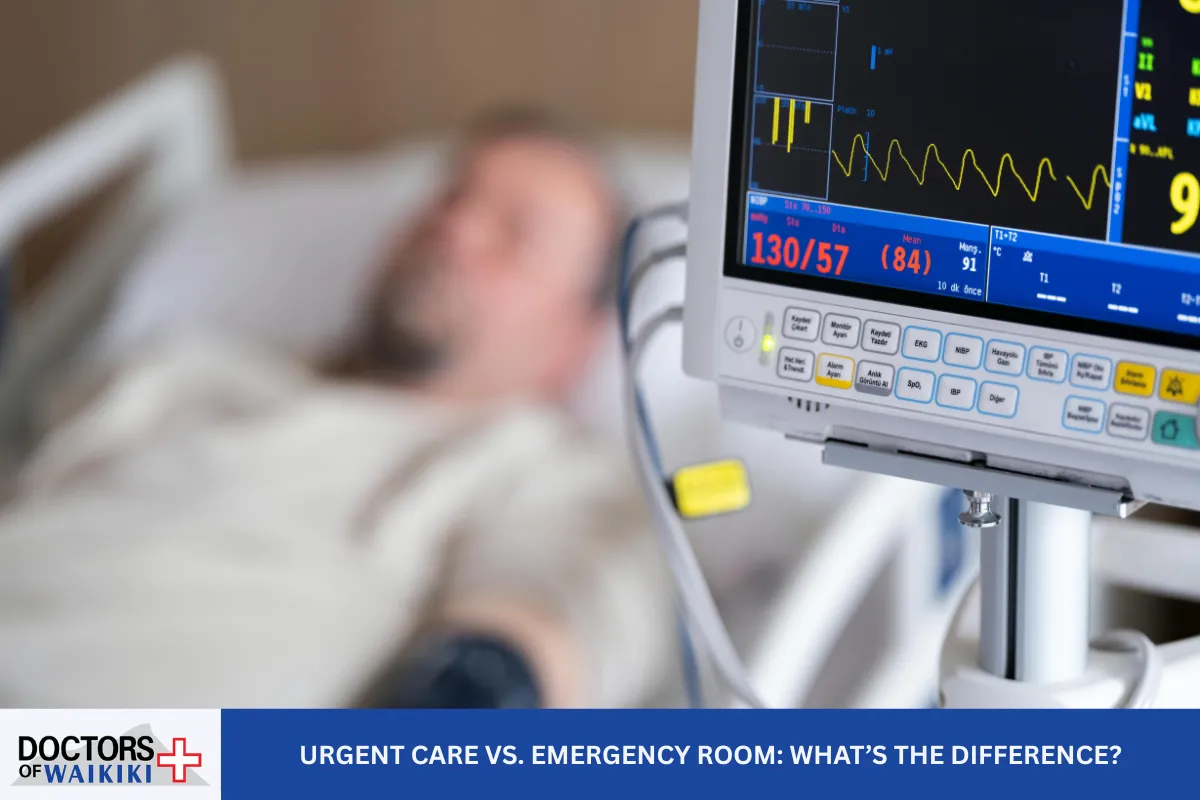
Deciding where to go for medical attention depends on how serious your medical situation is. The ER (emergency room) or emergency department is for true emergencies—life-threatening health issues that require immediate, hospital-level emergency care. Urgent care centers, walk-in care clinics, and walk-in medical clinics are designed to handle non-life-threatening injuries and illnesses.
Urgent Care Centers provide walk-in availability for conditions that aren’t emergencies but can’t wait for a regular doctor’s appointment. They offer patient-centered services for non-emergency issues like sprains, sore throats, minor injuries, sinus infections, and more. Urgent care clinics are equipped to treat common illnesses and injuries that need fast care but are not as severe.
Emergency Rooms should be used for the most serious injuries and illnesses—situations like severe bleeding, serious injuries, heart attack, stroke symptoms, severe chest pain, major head trauma, or when you feel the problem is life-threatening.
How Urgent Care Centers Work in Honolulu and Hawaii
In Honolulu, Oahu, and Waikiki, urgent care options range from large urgent care centers like The Queen’s Health System to community walk-in clinics and specialty centers such as doctors’ offices providing urgent care services. These clinics usually have board-certified doctors, nurse practitioners, support staff, and advanced practice providers.
Many are open after-hours, weekends, and even on holidays. Some stand-alone facilities operate with extended hours, while hospital-based urgent cares may be available as part of larger health systems. Pediatric urgent care and orthopedic injury walk-in clinic options are available for specialized needs. Wait times at most urgent care clinics are shorter than at emergency rooms, due to lower patient volumes and streamlined triage services.
Conditions Treated at Urgent Care Clinics
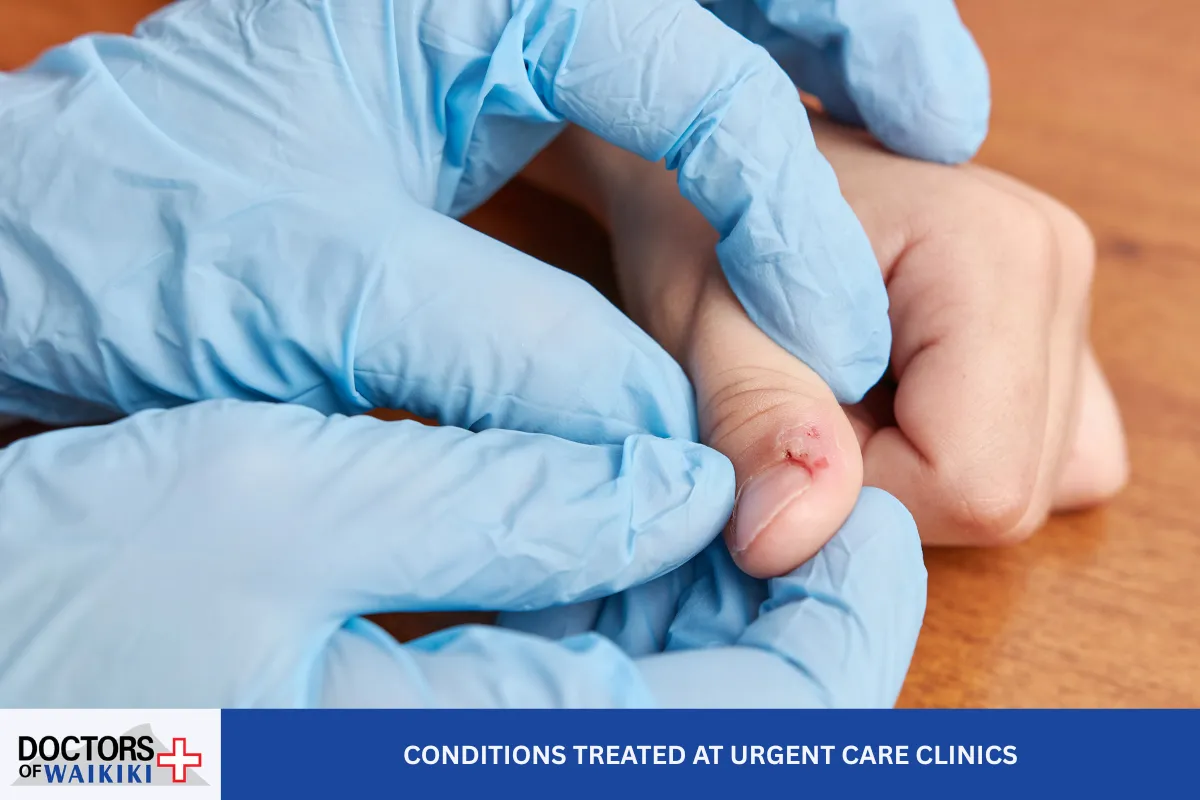
Walk-in clinics and urgent care facilities treat a wide variety of non-life-threatening health issues, including:
- Minor injuries: sprains, strains, simple fractures (like a fractured elbow), back pain, knee pain, neck pain, and shoulder pain
- Stitches and wound care: lacerations, cuts needing stitches, minor burns, mild bleeding
- Cold and flu symptoms: runny nose, sore throats, mild asthma, watery eyes, sinus infections, ear infections, strep throat, flu-like symptoms, and upper respiratory infections
- Infectious diseases: COVID-19 testing, flu and COVID-19 vaccines, RSV, strep throat, sinus and ear infections, urinary tract infection (UTI), pink eye
- Lab work and testing: blood work, blood draw, laboratory testing for common illnesses
- Diagnostic imaging: on-site X-ray and some advanced diagnostic testing
- IV fluids: mild to moderate dehydration
- Minor orthopedic conditions: sports injuries, auto accident injuries, simple fractures
- Other services: immunizations, flu shots, vaccines, sports physicals, sports injuries, work and school clearance, driver’s license physicals, occupational health services, occupational health
- Medicine refills: prescription refills for acute needs
- Women’s and men’s health: routine care, physical examinations, mental health support, chronic diseases management, health education, reproductive health
- Travel medicine: travel insurance paperwork, advanced laboratory services, travel immunizations, specialty care referrals, immigration physicals
Urgent care is suitable when you have worsening symptoms, but the situation isn’t immediately life-threatening.
Signs of a True Medical Emergency

If you notice any of these symptoms, the emergency room is the safest choice. Call 911 or go straight to the ER for:
- Severe chest pain or pressure, or possible heart attack symptoms (pain radiating to jaw/arm, sweating, shortness of breath)
- Stroke symptoms (FAST: Face droop, Arm weakness, Speech difficulty, Time to call 911)
- Severe allergic reaction (anaphylaxis: swelling of mouth/tongue, difficulty breathing, hives, severe swelling)
- Shortness of breath that is severe, sudden, or worsening
- Serious injuries: significant head trauma, neck injury, loss of consciousness
- Uncontrolled or severe bleeding
- Severe abdominal pain
- Pregnancy-related complications (severe pain, vaginal bleeding)
- Severe dehydration (especially in infants or elderly)
- High fever in infants or immunocompromised individuals
- Major fractures or broken bones showing deformity
- Sudden confusion, slurred speech, fainting, or altered mental status
- Severe pain anywhere that can’t be relieved
- Any injury or illness that you think might be life- or limb-threatening
Remember, a reasonable person should go to the ER if the medical condition looks serious enough that waiting could make things much worse.
Read Honolulu Urgent Care: Can Urgent Care Give IV Antibiotics?
When Will Urgent Care Send You to the ER?
Urgent care facilities have clear rules about which cases must be sent to the ER. Here are the most common reasons urgent care will transfer or refer you:
- Your symptoms are too severe or quickly worsening, meaning they may be outside the urgent care clinic’s scope of care
- Diagnostic imaging or advanced tests are needed (like CT scans or MRI) not available at urgent care
- IV medications for severe infections or cardiac monitoring are needed
- Medical conditions require hospital-level observation or specialty care
- Triage nurse assessment finds abnormal vital signs or high-risk status
- There’s a risk for time-sensitive emergencies: heart attack, stroke, sepsis, or major trauma
- Urgent care liability and safety protocols direct transfer “to err on the side of caution”
Examples include possible heart attack, major head injury, severe bleeding that cannot be controlled, or suspected appendicitis. If high-risk patients such as infants, elderly, pregnant women, or immunocompromised people present with certain symptoms, referral to the ER is standard.
Urgent care’s role is to stabilize, then transfer. They will take steps like starting an IV, providing oxygen, basic wound care, and immediately arranging for higher-level emergency medical care if needed.
How Does Urgent Care Transfer Patients to the ER?
When your condition is found to be more serious than urgent care can safely treat, the transfer process follows clear steps:
- Stabilization: The urgent care medical team provides immediate care to stabilize your medical situation (such as stopping severe bleeding, giving oxygen, or starting IV fluids).
- Triage and escalation: A nurse practitioner, board-certified physician, or advanced practice provider does a quick assessment to decide if the situation needs escalation.
- Transfer arrangements: If transfer is needed, the front desk or support staff calls 911 for ambulance transport, especially if moving the patient could be risky.
- Medical handoff: Staff prepare your electronic medical records, a summary of the situation, and emergency care instructions for the emergency department team receiving you.
- Documentation: All actions, vital signs, test results, and instructions are given to the ER team for continuity of care.
- Insurance and instructions: Staff may provide emergency care instructions and explain the next steps. If safe, you might be driven to the ER by family, but for the most severe cases, ambulance transport is safest.
For non-urgent transfers (when time allows and it’s safe), you get clear written transfer instructions or a recommendation to self-present to the ER. Sometimes, urgent care will call ahead to the hospital emergency room so they are expecting you.
Insurance, Costs, and Copays: What You Need to Know
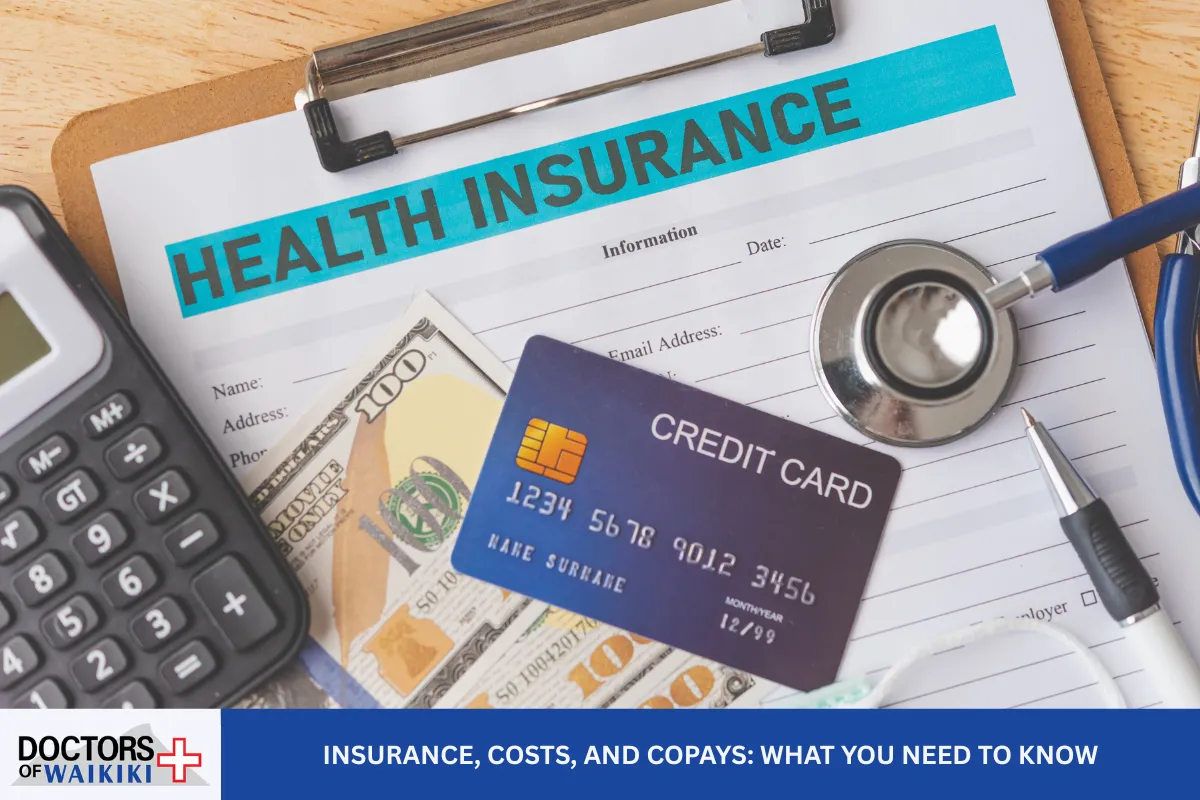
Many patients worry about costs—especially if urgent care sends them to the ER. Here’s what to know:
- Urgent care clinic costs are lower than ER visits. Typical urgent care copays (the price you pay) are often $30–$75, while ER copays are usually $100+ with many insurance plans.
- If you’re sent from urgent care to the ER, you may have to pay for both visits (unless your insurance bundles the charges for an official referral or transfer—check your health plan).
- Insurance coverage: Most urgent care clinics accept a wide range of private insurance, Medicaid, Medicare, TRICARE, and travel insurance. Some plans require a referral, prior authorization, or for you to stay “in-network.”
- Deductibles and out-of-pocket costs vary by plan; always bring your insurance card and a photo ID to your visit.
- Cost transparency: Ask the front desk for price estimates if you’re paying out-of-pocket.
- Non-emergent vs. emergent billing: If the ER finds your situation was not a true emergency, insurance may not pay as much as for a true emergency visit.
- Price estimate: Expect lower costs at urgent care; emergency room care is always the most expensive place to get medical attention unless your problem is truly an emergency.
What Services Can Urgent Care Provide?
Urgent care centers and walk-in clinics have expanded services that go far beyond a simple doctor’s visit. In Honolulu, you’ll find centers that offer:
- Radiology and imaging: On-site X-ray, basic radiology services. Some can do specialty care referrals for CT scan or MRI.
- Lab services: Blood tests, basic lab testing, urinalysis, and blood draw.
- Diagnostic testing: Rapid COVID testing, flu strep testing, EKG (electrocardiogram), laboratory services.
- Procedures: Splinting, stitches, laceration repair, foreign body removal, tetanus toxoid, hepatitis B vaccine.
- Medication: Epinephrine (for severe allergic reaction), nebulizers for asthma, antibiotics for bacterial infections, IV fluids for dehydration, and flu shots.
- Physical exams: School, sports, driver’s license, work clearances, and immigration physicals.
- Preventative healthcare: Immunizations, health screenings, antibiotic stewardship programs.
- Specialty medical services: Women’s health, men’s health, mental health support, occupational health, pain clinic, platelet-rich plasma injections, chronic diseases management.
- Telehealth and virtual urgent care: Online consultations for minor illnesses and routine care, with guidance on whether in-person care is recommended.
Your Visit: What to Bring and What to Expect
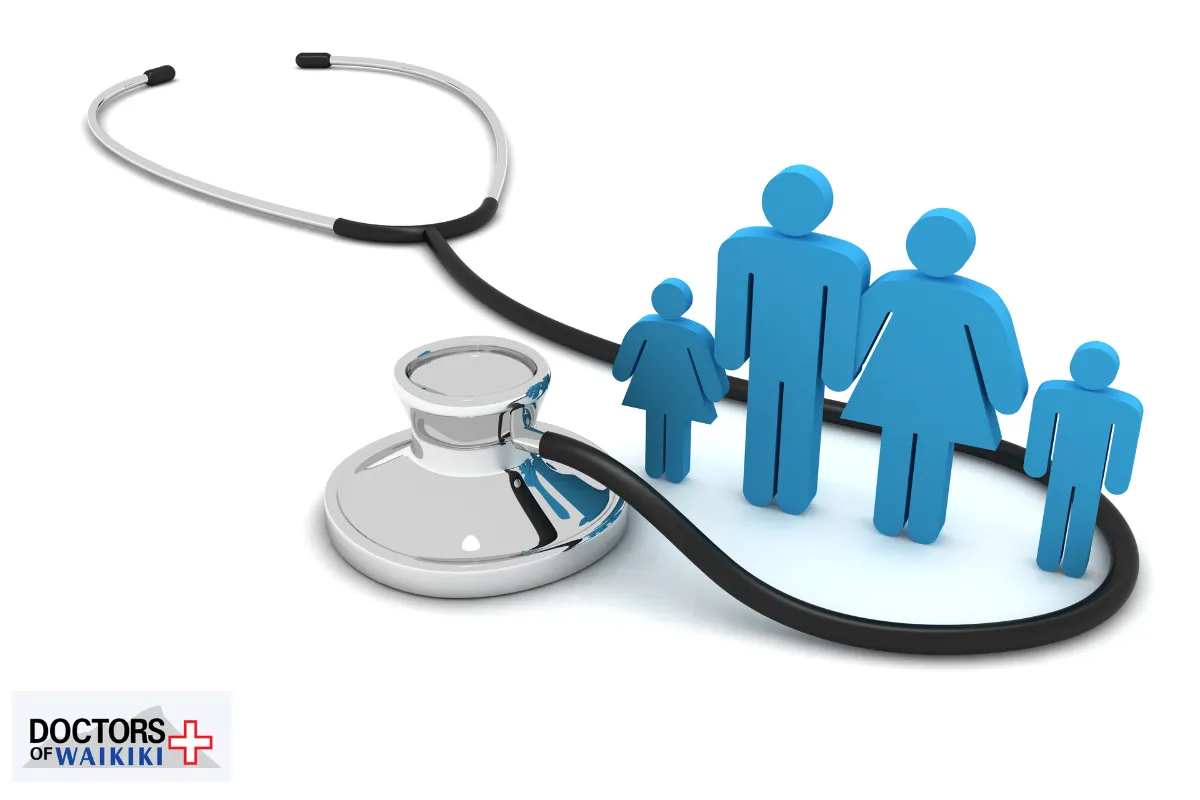
When visiting an urgent care clinic, preparation helps ensure a smooth, efficient visit:
- Bring: Photo ID, insurance card, list of current medications, a summary of your medical conditions, and any travel insurance documents if applicable.
- Walk-in visits: Appointments are usually not required, especially at walk-in medical clinics; check if “walk-in availability/open now” or “same-day care” is offered.
- Average wait time: Typically 15–60 minutes. During higher patient volumes (flu season or weekends), there may be a waiting line.
- Services provided: Review your symptom checklist and ask the front desk staff if your medical condition can be treated at urgent care or if the ER is more appropriate.
- Medical record: Electronic medical records shared with your primary care physician for follow-up if needed.
Walk-in, Telehealth, and After-Hours Options in Honolulu
Searching for “after-hours urgent care near me” or “open now”? Honolulu and the wider Oahu region offer many urgent care options:
- Walk-in clinics: No appointment needed for most minor injuries and illnesses.
- Telehealth: Great for possible COVID-19/flu symptoms, minor illnesses, and follow-up visits.
- 24/7 ER: Hospital emergency rooms are open at all hours for life-threatening or severe problems.
- Weekend and holiday urgent care: Many clinics are open with extended hours on weekends and holidays.
- Parking and directions: Most clinics provide easy access and parking; use “network finder” or online maps to locate a center close to Waikiki, Honolulu, or elsewhere on Oahu.
Honolulu Urgent Care – Doctors of Waikiki
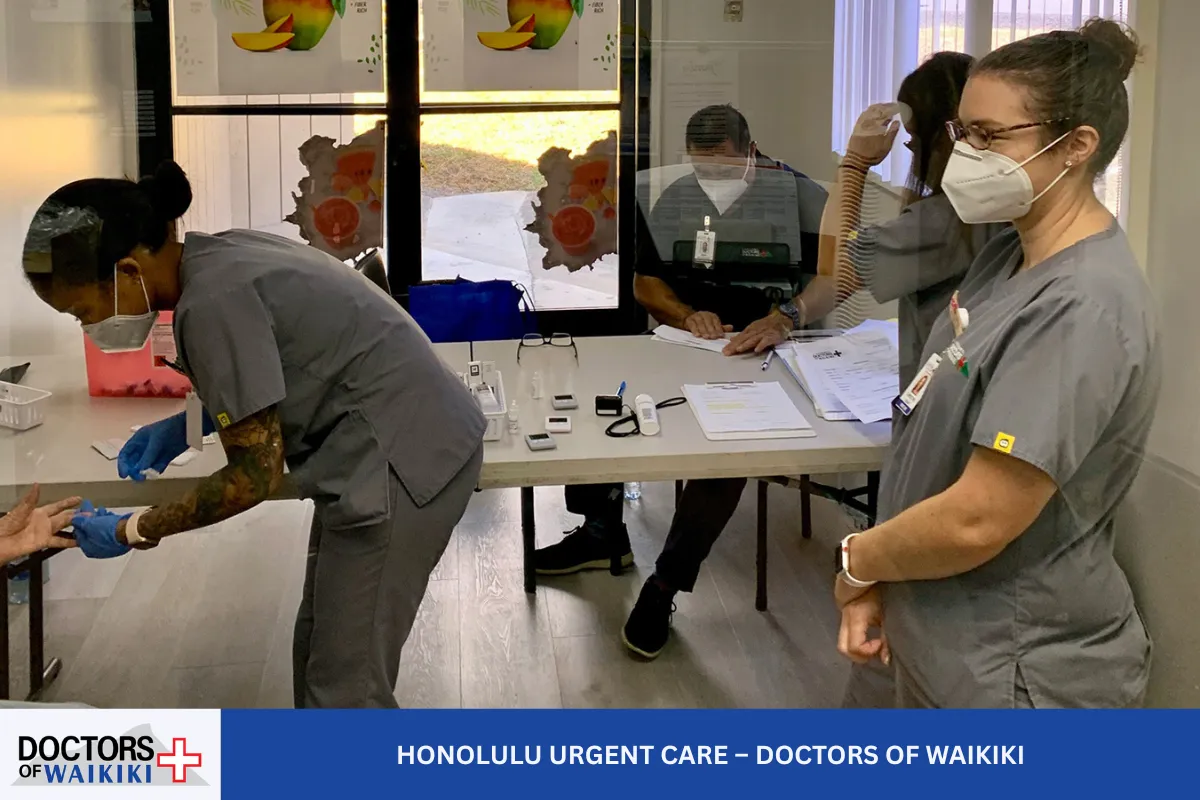
When urgent medical needs arise in Honolulu, Hawaii, it matters where you turn. Doctors of Waikiki provides expert Honolulu urgent care for non-life-threatening illnesses and injuries—no appointment necessary. Wondering if urgent care will send you to the ER? Our caring team helps you determine the right choice, offering immediate care for issues like sprains, cold and flu, minor wounds, and more. If your case requires hospital-level attention, our providers ensure a smooth, safe transition to the ER. Don’t let confusion delay your care or increase your costs. Choose Doctors of Waikiki for convenience, transparency, and compassionate service right here in the heart of Waikiki.
Call us today at (808) 922-2112 to schedule a consultation or walk in. Proudly serving Honolulu, Hawaii!
Frequently Asked Questions
1. Can urgent care clinics in Honolulu handle severe allergic reactions?
Urgent care clinics in Honolulu are equipped to treat mild to moderate allergic reactions with medications like epinephrine, antihistamines, and nebulizers. However, if you experience a severe allergic reaction leading to trouble breathing, tongue or throat swelling, or you feel faint and weak, this is a medical emergency. In these cases, urgent care providers will act fast to stabilize you with emergency medication, oxygen, or an IV if on hand, but will always call 911 or arrange an ambulance transfer to the ER. Public ambulances and emergency medical services are trained to manage life-threatening anaphylaxis en route to hospital care.
2. Will my insurance cover both urgent care and ER if I’m sent from one to the other?
Typically, if you go to urgent care and are then sent to the ER for further evaluation, you may have to pay for both visits—urgent care and ER—according to your specific insurance plan. Some insurance companies treat the urgent care assessment as a separate billable service, while others may combine the charges if a formal transfer or referral is documented. If your plan includes high deductibles or specific requirements like network restrictions or prior authorizations, contact your insurer for details. Always bring your insurance card and request a cost estimate upfront at both facilities.
3. What should I do if urgent care tells me to go to the ER, but I feel okay?
If an urgent care provider recommends you go to the ER—even if you don’t feel extremely unwell—it’s best to follow that advice. Medical professionals are trained to spot subtle dangerous signs that might not be obvious but can worsen quickly. For instance, symptoms like chest tightness, severe headache, or subtle stroke warning signs can escalate fast even if you don’t feel terrible. For your safety, err on the side of caution. Transportation options and instructions from your urgent care team will help you reach the ER safely.
4. Do I need an appointment to be seen at urgent care in Honolulu?
Most urgent care centers and walk-in clinics in Honolulu offer walk-in visits with no prior appointment needed. If you are unsure, check their website for wait time updates or call ahead for details. Some clinics now also offer online appointment scheduling and telehealth visits, which can minimize your waiting line or help determine if in-person care is truly needed for your symptoms.
5. Can urgent care provide all of the same imaging and lab tests as a hospital ER?
Urgent care clinics offer many important diagnostic services, such as on-site X-ray, basic blood tests, and some laboratory testing. However, urgent care is not set up for the most complex diagnostic imaging technology, like CT scans or MRIs, and may have limited hours for advanced laboratory work. If your health condition requires those tests or rapid advanced laboratories, you may be referred directly to the ER or a specialized area. Always ask the front desk or care team what tests are available on site during your visit.

